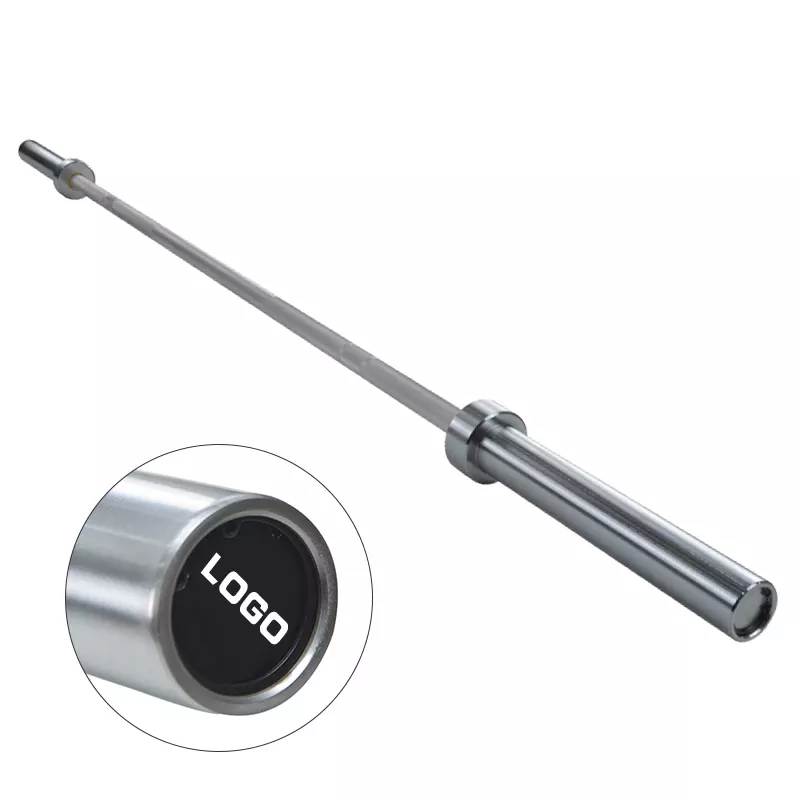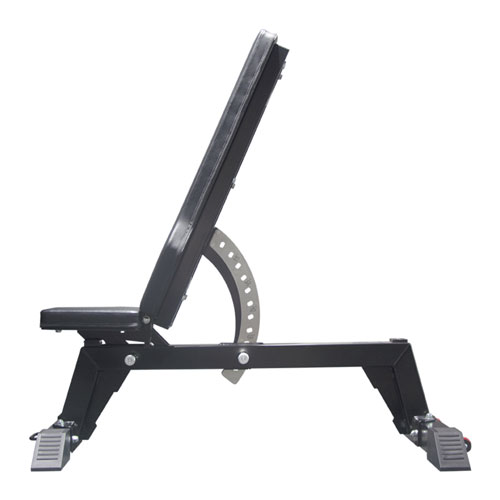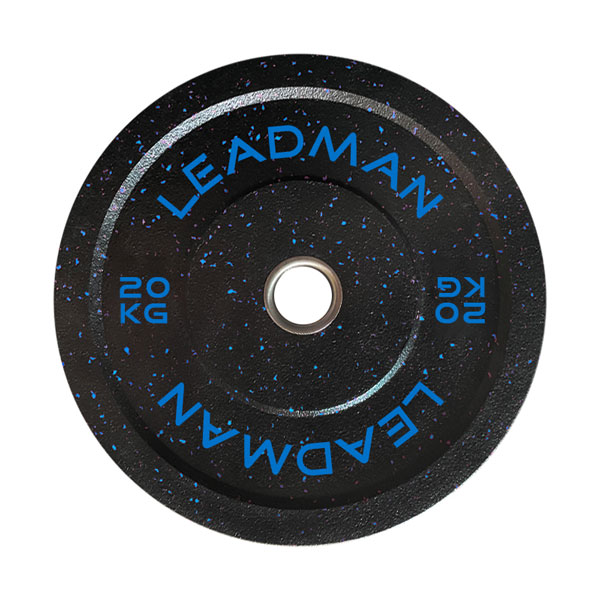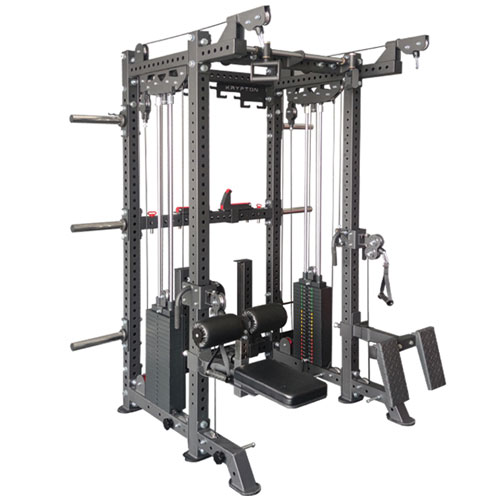Smith Bench Press - Pros, Cons & How-Tos
The Smith bench press, a modified version of the traditional barbell bench press, is a strength-building exercise that targets the chest muscles. It is performed on a specialized machine that guides the barbell along a fixed path, unlike the free-weight movement of the traditional barbell bench press. The Smith bench press offers certain advantages and disadvantages, making it suitable for specific fitness goals and individuals.
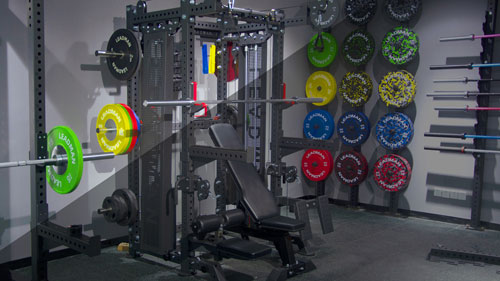
Pros of the Smith Bench Press
A. Guided Bar Movement: Reduced Risk of Injury
The guided bar movement is a defining characteristic of the Smith bench press. The barbell is fixed within the frame of the machine, which helps to stabilize the weight and reduces the risk of the bar falling or shifting. This provides a safer alternative for beginners or individuals with limited mobility, as it eliminates the need for spotters.
B. Improved Stability and Balance
The machine's fixed bar path enhances stability and balance during the exercise. The user does not have to worry about controlling the bar's lateral movement, which can be challenging for novice lifters. This improved stability allows for better focus on proper form and muscle engagement.
C. Suitable for Beginners and Individuals with Limited Mobility
The Smith bench press is an excellent exercise for beginners looking to develop their chest muscles. The guided bar movement and enhanced stability make it a low-risk option for those new to weightlifting. It is also beneficial for individuals with limited mobility or shoulder issues, as the fixed path allows them to maintain proper form without putting undue stress on the joints.
Cons of the Smith Bench Press
A. Fixed Bar Path: Restricts Natural Shoulder Rotation
The fixed bar path of the Smith bench press restricts the natural rotation of the shoulders during the movement. This can lead to muscle imbalances and hinder optimal chest development. In contrast, the barbell bench press allows for greater shoulder rotation, which is more in line with the natural movement of the body.
B. Potential for Muscle Imbalances
Due to the fixed bar path, the Smith bench press emphasizes the front deltoids more than the lateral deltoids. Over time, this can lead to muscle imbalances, as the front deltoids become stronger than the lateral deltoids.
C. Limited Advanced Variations
Unlike the barbell bench press, the Smith bench press offers limited advanced variations. The fixed bar path restricts the user's ability to perform different angles and techniques, which can limit progression for experienced lifters.
Considerations for Using the Smith Bench Press
When considering incorporating the Smith bench press into your fitness routine, several factors should be taken into account:
A. Fitness Goals and Experience Level
Beginners and individuals with limited mobility may benefit from the Smith bench press due to its safer and more stable nature. However, experienced lifters may find it ограничивает and prefer the barbell bench press for optimal strength development.
B. Individual Anatomy and Biomechanics
The Smith bench press is not suitable for everyone. Individuals with certain body structures or biomechanics may experience discomfort or limitations when using the machine. It is important to assess your individual needs and consult with a qualified fitness professional before using the Smith bench press.
C. Proper Form and Technique
As with all exercises, maintaining proper form is crucial for maximizing results and minimizing the risk of injury. Ensure that you position your body correctly, engage your core, and maintain a controlled movement throughout the exercise.
Step-by-Step Guide to Performing the Smith Bench Press
A. Setup and Initial Positioning
- Adjust the seat height so that your feet are flat on the floor and your thighs are parallel to the ground.
- Lie down on the bench with your back flat against the pad.
- Grip the bar with a slightly wider than shoulder-width grip, with your hands outside the shoulder pads.
- Unrack the bar and hold it at chest height, with your elbows slightly bent.
B. Lowering the Bar
- Inhale and slowly lower the bar towards your chest, keeping your elbows close to your body.
- Continue lowering the bar until it touches the middle of your chest.
C. Pressing the Bar
- Exhale and press the bar back up to the starting position.
- Extend your elbows fully, but do not lock them out.
- Hold the bar at the top position for a moment before lowering it back down.
D. Returning to the Starting Position
- Inhale and reverse the movement, slowly lowering the bar back down to your chest.
- Repeat the exercise for the desired number of repetitions.
Variations of the Smith Bench Press
A. Incline Smith Bench Press
- Adjust the bench to an incline position.
- Follow the same steps as outlined in the basic Smith bench press.
- The incline variation targets the upper chest muscles.
B. Decline Smith Bench Press
- Adjust the bench to a decline position.
- Follow the same steps as outlined in the basic Smith bench press.
- The decline variation targets the lower chest muscles.
C. Dumbbell Smith Bench Press
- Hold a dumbbell in each hand and lie down on the bench.
- Rest the dumbbells on your thighs and unrack them.
- Press the dumbbells up towards the ceiling, keeping your elbows close to your body.
- Lower the dumbbells back down to the starting position.
- The dumbbell variation allows for a greater range of motion and engagement of the stabilizing muscles.
Benefits of Incorporating the Smith Bench Press
A. Increased Strength and Chest Muscle Development
The Smith bench press is an effective exercise for building strength and developing the chest muscles, particularly the pectoralis major and minor. It is commonly used as a compound exercise to improve upper body power and hypertrophy.
B. Improved Stability and Coordination
The fixed bar path of the Smith bench press promotes stability and coordination. It is an excellent exercise for individuals looking to improve their overall balance and muscle control.
C. Assistance with Heavier Lifts
For experienced lifters, the Smith bench press can serve as an assistance exercise to prepare for heavier barbell bench press lifts. It allows them to practice the movement pattern and build strength without subjecting their bodies to excessive strain.
Safety Tips for the Smith Bench Press
A. Use Proper Form
Always maintain proper form when performing the Smith bench press. Keep your back flat, engage your core, and avoid arching your lower back.
B. Warm Up Adequately
Warm up your muscles before attempting heavy weights. Begin with lighter sets and gradually increase the weight as you prepare for your working sets.
C. Set the Bar at the Appropriate Height
Set the bar at chest height, with your elbows slightly bent. This will help to prevent excessive strain on your shoulders.
D. Avoid Excessive Weight
Do not attempt to lift excessive weights beyond your capabilities. Use a weight that allows you to maintain proper form and complete the desired number of repetitions.
E. Consult with a Qualified Fitness Professional
If you are unsure about the proper technique or have any concerns, consult with a qualified fitness professional for guidance.
Conclusion
The Smith bench press is a versatile exercise machine that offers advantages and disadvantages for different fitness goals and individuals. It provides a safer and more stable alternative for beginners and individuals with limited mobility, while also assisting experienced lifters in building strength and improving coordination. When incorporated into a well-rounded fitness program and performed with proper form, the Smith bench press can be a valuable tool for developing chest muscles and enhancing overall upper body strength. However, it is important to consider individual fitness needs and limitations and explore different bench press variations to maximize results.
FAQs about the Smith Bench Press
A. Is it better than the barbell bench press?
The Smith bench press has its advantages, such as reduced risk of injury and improved stability, but it also has limitations, including restricted bar movement and limited advanced variations. Whether it is better than the barbell bench press depends on individual fitness goals and preferences.
B. Can it replace the barbell bench press?
The Smith bench press can be a valuable addition to a strength training program, but it should not completely replace the barbell bench press. The barbell bench press offers a more natural movement pattern and allows for greater exercise variations.
C. How often and how much weight should I use?
The frequency and amount of weight used for the Smith bench press vary depending on individual fitness levels and goals. For beginners, starting with 2-3 sets of 10-12 repetitions using a weight that is challenging but manageable is recommended. Frequency can range from 1-2 times per week.

